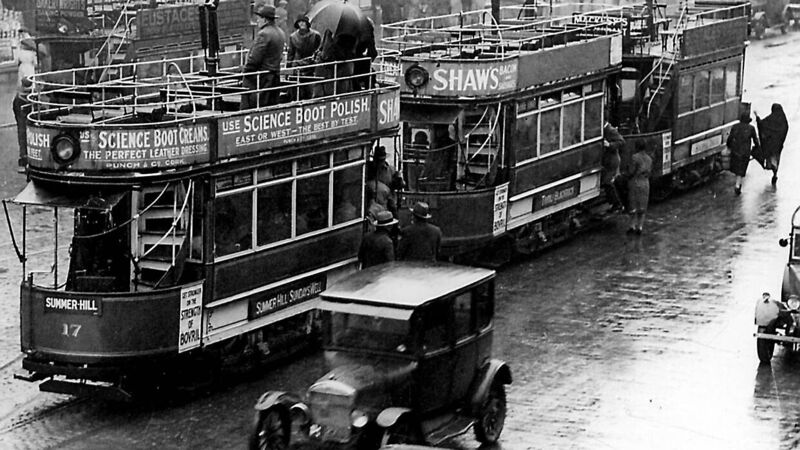Will we get trams by 2031, 100 years after last one ran in Cork?

I answered: “When I’m an old lady”.
Despite my cynicism, my son is excited about getting on a tram on a regular basis and thinking up names for Cork’s equivalent of the Luas.
I don’t think ‘Hoggy’ will fly with the branding consultants. My slogan ‘ag dul go mall ar an South Mall’ is definitely not going to wash with the marketing experts wearing architect glasses who’ll be paid big money to flick through the Irish dictionary looking up the Irish for ‘progress’ - dul chun cinn (too wordy), or ‘motion’ - tairiscint (too hard to spell).
Unfortunately, ‘slowly’, or ‘go mall’, is the defining characteristic of progress on Cork’s light rail plans.
More buses and dedicated bus corridors seem to be the answer and will be the workhorses of the public transport system.
However, if Cork becomes the fastest-growing city region in Ireland with a projected 50% to 60% increase of its population by 2040, and aspires to be a vibrant European city, why does the prospect of a metropolitan tram system seems to be continually a far-flung ambition?
Suggestions of a light rail whooshing down Washington Street, delicately dinging its bell towards Ballincollig, have been floating around for years.
Building 17km of rail network, 25 stops and commissioning all the trams to run the service will take time and planning. What’s the hold up?
In 2007, this paper commissioned a Red C opinion poll about the issue and 77% of respondents were in favour of a light rail system. Those findings suggest if you build it, they will come.
Corkonians are willing to jump on board the proposed transport system. Dublin launched the Luas in 2004 and it now carries about 48 million passenger journeys every year, and several extensions and connections to the Luas network are already completed.
The sad fact is that Cork had this kind of infrastructure before.
If you needed to go further west, you could hop on the Cork Muskerry Light Rail at the Western Road or Victoria Cross stops and go as far as Donaghmore or Coachford.
If you needed to go the other direction, the Cork, Blackrock and Passage Railway could take you as far as Crosshaven, with a stop at Carrigaline.
I’m sure Carrigaline commuters today would appreciate the option of commuting by train with a view of the harbour, instead of the view of rows of SUV bumpers clogging up the N28.
Early suggestions that Cork Corporation take over the company faded and news reports from the time were more concerned about the compensation for the 230 employees rather than the disruption to the citizens of the city.
The Echo described a heated meeting of the Council of the Borough of Cork held on March 24, 1931, when a prescient Mr Barry “expressed regret that the Corporation’s efforts to retain the service of the trams was not successful. The citizens would realise their loss when they were gone.”
Another alderman argued it was “regrettable that the Corporation had not the pluck to give the trams a 12-month trial”.
In an exchange that could be lifted straight from reports of a Cork City Council meeting in 2022, aldermen, as they were then, argued: “In Dublin, the trams are a success, and why not a success in Cork?”
Exactly, Alderman, why not in Cork?
The Dutch city of Utrecht, again with a similar population to Cork, has the Sneltram since the early 1980s.
Functional urban light rail is not the preserve of those practical northern Europeans, the French city of Nice has enjoyed the Nice tramway since 2007. Alicante has a rail network that includes subway and tram trains.
If our European cousins, who live in similarly populated cities, can pull off a successful light rail network and reap the benefits that this mode of transport brings in terms of fewer car journeys, better air quality, and improved traffic, we can too!
After last week’s BusConnect Cork report, there were calls for a permanent local office of the National Transport Authority in Cork to drive the plans and promises contained in the Cork’s Transport Strategy.
The year 2031 will be the 100th anniversary since Cork’s last tram service ran on our streets. I think September, 2031, is a reasonable and fitting deadline for cutting the ribbon on Cork’s new tram service.
That gives us nine years to come up with a good name for it!







 App?
App?







